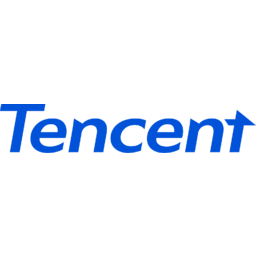
P/E ratio for Tencent (TCEHY)
P/E ratio as of May 2024 (TTM): 15.9
According to Tencent's latest financial reports and stock price the company's current price-to-earnings ratio (TTM) is 15.8907. At the end of 2022 the company had a P/E ratio of 14.7.
P/E ratio history for Tencent from 2011 to 2023
PE ratio at the end of each year
| Year | P/E ratio | Change |
|---|---|---|
| 2022 | 14.7 | -7.8% |
| 2021 | 15.9 | -45.15% |
| 2020 | 29.0 | -13.6% |
| 2019 | 33.6 | 7.07% |
| 2018 | 31.4 | -31.32% |
| 2017 | 45.7 | 23.87% |
| 2016 | 36.9 | -7.62% |
| 2015 | 40.0 | 14.6% |
| 2014 | 34.9 | -25.24% |
| 2013 | 46.6 | 58.13% |
| 2012 | 29.5 | 27.86% |
| 2011 | 23.1 |
P/E ratio for similar companies or competitors
| Company | P/E ratio | P/E ratio differencediff. | Country |
|---|---|---|---|
 Meta (Facebook) FB | 14.7 | -7.65% | 🇺🇸 USA |
 PayPal PYPL | 19.5 | 22.52% | 🇺🇸 USA |
 Alibaba BABA | 17.3 | 9.16% | 🇨🇳 China |
 Jingdong Mall JD | 16.6 | 4.32% | 🇨🇳 China |
How to read a P/E ratio?
The Price/Earnings ratio measures the relationship between a company's stock price and its earnings per share. A low but positive P/E ratio stands for a company that is generating high earnings compared to its current valuation and might be undervalued. A company with a high negative (near 0) P/E ratio stands for a company that is generating heavy losses compared to its current valuation.
Companies with a P/E ratio over 30 or a negative one are generaly seen as "growth stocks" meaning that investors typically expect the company to grow or to become profitable in the future.
Companies with a positive P/E ratio bellow 10 are generally seen as "value stocks" meaning that the company is already very profitable and unlikely to strong growth in the future.